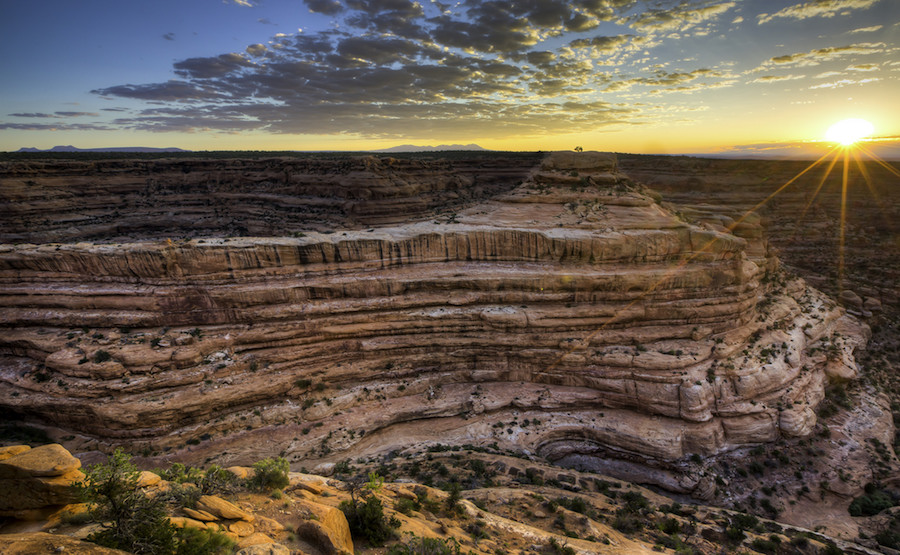
NEW YORK (Reuters) – U.S. President Donald Trump will shrink the size of two national monuments in Utah, Senator Orrin Hatch of Utah said on Friday, a change that will open parts of them to drilling and mining but which Democrats, environmental groups and Native Americans are vowing to fight.
The decision would mark the Trump administration’s most symbolic land designation to date, reflecting its broader effort to boost development on federal land while rolling back Obama-era environmental and conservation efforts.
The two Utah sites, Bears Ears National Monument and Grand Staircase-Escalante National Monument, are among several that U.S. Interior Secretary Ryan Zinke has recommended reducing in size in order to make way for more industrial activity.
Zinke was charged by a Trump executive order in April to review some 27 such monuments that were created by past presidents under the Antiquities Act – a century-old law that protects cultural artifacts and other historical objects but which Trump has said has been misused as a way to put huge tracts of land off limits to development.
Former President Barack Obama designated the 1.35-million-acre Bears Ears site – named for its iconic twin buttes – as a national monument during his final days in office.
“I was incredibly grateful the President called this morning to let us know that he is approving Secretary Zinke’s recommendation on Bears Ears,” Hatch said in a statement emailed to Reuters. The statement did not provide details on the exact changes to the boundaries or the legal mechanism the administration might use to make the changes.
White House spokeswoman Sarah Sanders, when asked about the monument decision, said she did not want to get ahead of the president’s announcement. “I can tell you he (Trump) will be going to Utah in the first part of early December,” she said.
Trump met with Zinke in the Oval Office on Friday.
Sanders said both Trump and Zinke spoke to Hatch and Utah’s other U.S. senator, Mike Lee, during the course of the meeting. Lee has also supported shrinking the sites.
While national parks are created by Congress largely to protect outstanding scenic features or natural phenomena, national monuments are created by presidents, in recognition of a site’s cultural, historical or scientific importance.
Industry groups like the oil lobbying organization the American Petroleum Institute have said in the past that both Bears Ears and Grand Staircase-Escalante were unfairly designated as monuments and needed to be reviewed.
Green groups and scientists have supported the designations and condemned any move to reduce their size.
“Any efforts to take away protections for America’s lands and waters will be met by deep opposition and with the law on our side,” said Jamie Williams, president of The Wilderness Society, in a statement on Friday.
The Navajo, who consider Bears Ears sacred ground, on Friday followed up their comment in September that they would sue the Trump administration for violating the Antiquities Act if it tried to reduce the monument’s size.
“The Navajo Nation stands ready to defend the Bears Ears National Monument. We have a complaint ready to file upon official action by the President.” Ethel Branch, the Navajo Nation’s attorney general, said in an email to Reuters on Friday.
Grand Staircase, which was designated a national monument by President Bill Clinton in 1996, has drawn concern because an archeological site lies beneath it where two dozen new species of dinosaurs have been discovered. A coal deposit also lies beneath Grand Staircase. Paleontologists are worried the site could be destroyed if the monument’s size is reduced, the Los Angeles Times reported on Thursday.
A spokesman for Representative Rob Bishop, a Republican from Utah who is chairman of the House of Representatives Natural Resources Committee, said on Friday that Bishop was working on legislation “that will protect the antiquities in the Bears Ears region, ensure that local voices are heard and bring some finality to this issue once and for all.”
Reporting by Emily Flitter; Additional reporting by Valerie Volcovici and Roberta Rampton in Washington; Editing by Andrew Hay and Leslie Adler